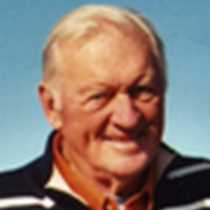Astoria, Oregon
Peculiar weather can blow in from the Pacific Ocean to Astoria. However, today was a stand-in for summer. Dropping anchor in the midst of the Lewis and Clark Wildlife Refuge provided scenic and easy access to these pristine waters. On the southern shore rolling hills are covered with verdant growth including overlooks dedicated to watching bald eagles and other critters.
Kayaks and Zodiacs were launched at 0830 among shore shadows, blue sky, and a rising sun. This water adventure took place on the John Day River (another more potent John Day River flows upstream near the John Day Dam.) With Tongue Point and Saddle Mountain in view, boats nudged the shore and slowly circled muddy waterways. Naturalists and historians narrated the gentle exploration. Great blue heron, osprey, crow, ducks and a tangle of big leaf maple, western hemlock, Sitka spruce and English ivy were everywhere. Midway through the trip the galley crew drew alongside with hot chocolate drinks and biscotti.
After returning to the National Geographic Sea Bird the historian gave an introductory presentation entitled “Who Are Lewis & Clark?” as background for the afternoon visit to Fort Clatsop, site of the Corps’ 1805-1806 winter camp.
At 1300, the motor coach took Highway 101 (the Oregon shore route) south to Fort Clatsop. With naturalist and historian narration along the way, guests passed through the outskirts of Astoria, rolled by Warrenton and the village of Hammond. A major U.S. Coast Guard station and airfield is nearby (part of the necessary vigilance needed at the fabled Columbia River bar.) Despite best efforts en route the resident Roosevelt elk population was hiding, but the rich Clatsop plains, dikes, deciduous trees, and several small farms marked our way.
Fort Clatsop, one of the nation’s premier national monuments, provided a volunteer guide/docent for an introductory film, a tour of the small museum, reconstructed fort and canoe landing. Enough time remained to rummage through one of the nation’s best Lewis & Clark bookshops. On the return trip guests were treated to a spectacular view of the Columbia River mouth from 600-foot-high Coxcomb Hill, next to the Astoria Column.
Underway at 1700 in bright evening sunshine, Re-cap included a brief historian talk about Sam Hill, one of the Gorge’s more colorful characters, and responsible for the scenic Columbia Gorge Historic Highway and Maryhill Museum, both of which guests will visit tomorrow.
Peculiar weather can blow in from the Pacific Ocean to Astoria. However, today was a stand-in for summer. Dropping anchor in the midst of the Lewis and Clark Wildlife Refuge provided scenic and easy access to these pristine waters. On the southern shore rolling hills are covered with verdant growth including overlooks dedicated to watching bald eagles and other critters.
Kayaks and Zodiacs were launched at 0830 among shore shadows, blue sky, and a rising sun. This water adventure took place on the John Day River (another more potent John Day River flows upstream near the John Day Dam.) With Tongue Point and Saddle Mountain in view, boats nudged the shore and slowly circled muddy waterways. Naturalists and historians narrated the gentle exploration. Great blue heron, osprey, crow, ducks and a tangle of big leaf maple, western hemlock, Sitka spruce and English ivy were everywhere. Midway through the trip the galley crew drew alongside with hot chocolate drinks and biscotti.
After returning to the National Geographic Sea Bird the historian gave an introductory presentation entitled “Who Are Lewis & Clark?” as background for the afternoon visit to Fort Clatsop, site of the Corps’ 1805-1806 winter camp.
At 1300, the motor coach took Highway 101 (the Oregon shore route) south to Fort Clatsop. With naturalist and historian narration along the way, guests passed through the outskirts of Astoria, rolled by Warrenton and the village of Hammond. A major U.S. Coast Guard station and airfield is nearby (part of the necessary vigilance needed at the fabled Columbia River bar.) Despite best efforts en route the resident Roosevelt elk population was hiding, but the rich Clatsop plains, dikes, deciduous trees, and several small farms marked our way.
Fort Clatsop, one of the nation’s premier national monuments, provided a volunteer guide/docent for an introductory film, a tour of the small museum, reconstructed fort and canoe landing. Enough time remained to rummage through one of the nation’s best Lewis & Clark bookshops. On the return trip guests were treated to a spectacular view of the Columbia River mouth from 600-foot-high Coxcomb Hill, next to the Astoria Column.
Underway at 1700 in bright evening sunshine, Re-cap included a brief historian talk about Sam Hill, one of the Gorge’s more colorful characters, and responsible for the scenic Columbia Gorge Historic Highway and Maryhill Museum, both of which guests will visit tomorrow.




